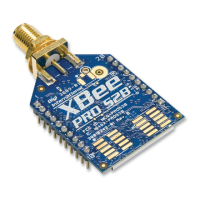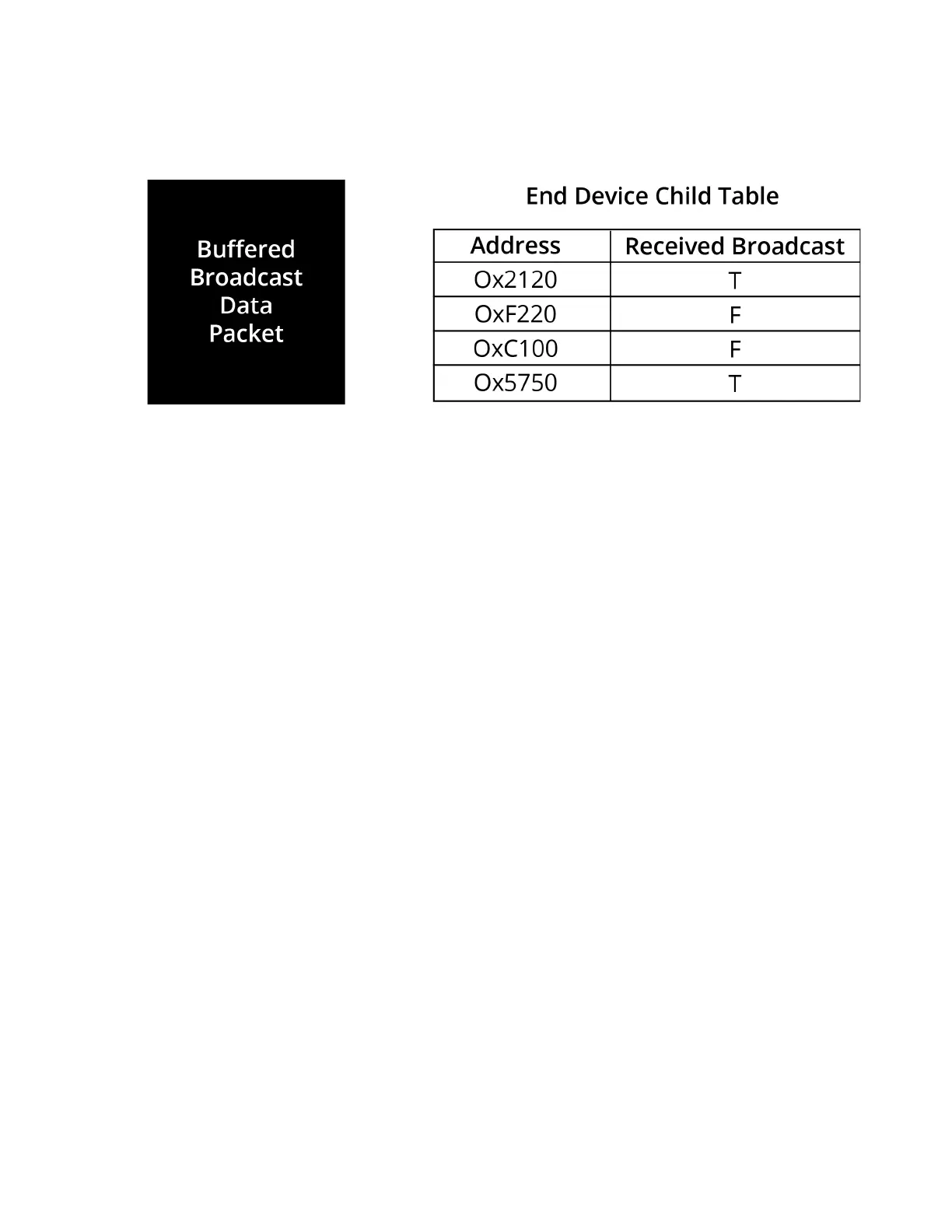Managing End Devices Non-parent device operation
XBee/XBee-PRO ZigBee RF Modules User Guide 90
all children have not received a buffered broadcast packet and a new broadcast is received, the old broadcast
packet is discarded, the child table flags are cleared, and the new broadcast packet is buffered for the end device
children. This is demonstrated in the figure below.
When an end device sends data to its parent that is destined for a remote device in the network, the parent
buffers the data packet until it can establish a route to the destination. The parent may perform a route or 16-bit
address discovery in behalf of its end device children. Once a route is established, the parent sends the data
transmission to the remote device.
End Device poll timeouts
To better support mobile end devices (end devices that can move around in a network), parent router and
coordinator devices have a poll timeout for each end device child. If an end device does not send a poll request to
its parent within the poll timeout, the parent will remove the end device from its child table. This allows the child
table on a router or coordinator to better accommodate mobile end devices in the network.
Packet buffer usage
Packet buffer usage on a router or coordinator varies depending on the application. The following activities can
require use of packet buffers for up to several seconds:
Route and address discoveries
Application broadcast transmissions
Stack broadcasts (for example, ZDO “Device Announce” messages when devices join a network)
Unicast transmissions (buffered until acknowledgment is received from destination or retries exhausted)
Unicast messages waiting for end device to wake.
Applications that use regular broadcasting or that require regular address or route discoveries will use up a
significant number of buffers, reducing the buffer availability for managing packets for end device children.
Applications should reduce the number of required application broadcasts, and consider implementing an
external address table or many-to-one and source routing if necessary to improve routing efficiency.
Non-parent device operation
Devices in the ZigBee network treat data transmissions to end devices differently than transmissions to other
routers and coordinators. Recall that when a unicast transmission is sent, if a network acknowledgment is not
received within a timeout, the device resends the transmission. When transmitting data to remote coordinator or
router devices, the transmission timeout is relatively short since these devices are powered and responsive.
However, since end devices may sleep for some time, unicast transmissions to end devices use an extended

